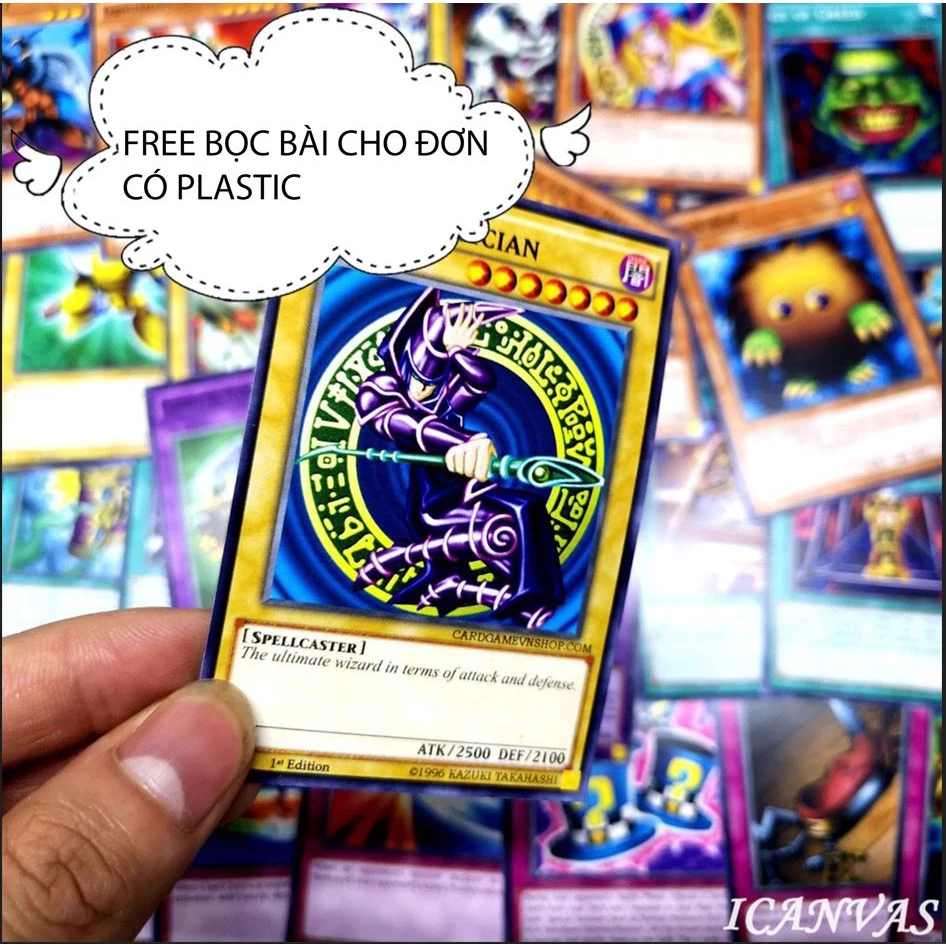Nhóm ngôn ngữ Athabasca Nam
Nhóm ngôn ngữ Athabasca Nam | |
|---|---|
| Apache | |
| Phân bố địa lý | Tây Nam Hoa Kỳ |
| Phân loại ngôn ngữ học | |
| Ngữ ngành con |
|
| ISO 639-2 / 5: | apa |
| Glottolog: | apac1239[1] |
 Phân bố lịch sử của nhóm ngôn ngữ Athabasca Nam | |
Nhóm ngôn ngữ Athabasca Nam (cũng gọi là Apache) là một phân nhóm của nhóm ngôn ngữ Athabasca được sử dụng chủ yếu ở Tây Nam Hoa Kỳ (bao gồm Arizona, New Mexico, Colorado và Utah) với hai ngoại lệ ở Oklahoma và Texas. Ngôn ngữ này cũng được sử dụng ở mức độ thấp hơn nhiều tại các bang Sonora, Chihuahua, Durango, Coahuila và Nuevo León ở miền bắc Mexico. Những ngôn ngữ này được nói bởi nhiều nhóm người Apache và Navajo. Ở những nơi khác, ngôn ngữ Athabasca được nói bởi nhiều nhóm người bản địa ở Alaska, Canada, Oregon và miền bắc California.
Tện tự gọi của tiếng Tây Apache và Navajo lần lượt là Nnee biyáti’/Ndee biyáti' và Diné bizaad/Naabeehó bizaad.
Có một số người nổi tiếng trong lịch sử có ngôn ngữ mẹ đẻ thuộc nhóm Athabasca Nam. Geronimo (Goyaałé), người nói tiếng Chiricahua là một người đột kích và lãnh đạo chiến tranh nổi tiếng. Manuelito nói tiếng Navajo và nổi tiếng vì sự lãnh đạo của ông trong và sau Hành trình dài của người Navajo.
Gia đình
[sửa | sửa mã nguồn]Bảy ngôn ngữ Athabasca Nam có thể được chia thành hai nhóm theo phân loại của Harry Hoijer: (I) Đồng bằng và (II) Tây Nam. Tiếng Apache Đồng Bằng là thành viên duy nhất của nhóm Apache Đồng Bằng. Nhóm Tây Nam có thể được chia thành hai nhóm nhỏ (A) Tây và (B) Đông. Phân nhóm miền Tây bao gồm tiếng Apache Tây, tiếng Navajo, tiếng Mescalero và tiếng Chiricahua. Phân nhóm miền Đông bao gồm tiếng Jicarilla và tiếng Apache Lipan.
Tham khảo
[sửa | sửa mã nguồn]- ^ Nordhoff, Sebastian; Hammarström, Harald; Forkel, Robert; Haspelmath, Martin biên tập (2013). “Apachean”. Glottolog. Leipzig: Max Planck Institute for Evolutionary Anthropology.
Đọc thêm
[sửa | sửa mã nguồn]- Cremony, John Carey. 1868. Life Among the Apaches. A. Roman, 1868. Length 322 pages. Chapter XX discusses the Apache language, number system, and grammar.
- Hoijer, Harry. (1938). The southern Athapaskan languages. American Anthropologist, 40 (1), 75-87.
- Hoijer, Harry. (1945). Classificatory verb stems in the Apachean languages. International Journal of American Linguistics, 11 (1), 13-23.
- Hoijer, Harry. (1945). The Apachean verb, part I: Verb structure and pronominal prefixes. International Journal of American Linguistics, 11 (4), 193-203.
- Hoijer, Harry. (1946). The Apachean verb, part II: The prefixes for mode and tense. International Journal of American Linguistics, 12 (1), 1-13.
- Hoijer, Harry. (1946). The Apachean verb, part III: The classifiers. International Journal of American Linguistics, 12 (2), 51-59.
- Hoijer, Harry. (1948). The Apachean verb, part IV: Major form classes. International Journal of American Linguistics, 14 (4), 247–259.
- Hoijer, Harry. (1949). The Apachean verb, part V: The theme and prefix complex. International Journal of American Linguistics, 15 (1), 12–22.
- Hoijer, Harry. (1956). The Chronology of the Athapaskan languages. International Journal of American Linguistics, 22 (4), 219-232.
- Hoijer, Harry. (1963). The Athapaskan languages. In H. Hoijer (Ed.), Studies in the Athapaskan languages (pp. 1–29). University of California publications in linguistics 29. Berkeley: University of California Press.
- Hoijer, Harry (Ed.). (1963). Studies in the Athapaskan languages. University of California publications in linguistics 29. Berkeley: University of California Press.
- Hoijer, Harry. (1971). The position of the Apachean languages in the Athapaskan stock. In K. H. Basso & M. E. Opler (Eds.), Apachean culture history and ethnology (pp. 3–6). Anthropological papers of the University of Arizona (No. 21). Tucson: University of Arizona Press.
- Hymes, Dell H. (1957). A note on Athapaskan glottochronology. International Journal of American Linguistics, 22 (4), 291-297.
- Liebe-Harkot, Marie-Louise. (1984). A comparison of Apachean languages, exemplified by the verb system for handling verbs. In H. Krenn, J. Niemeyer, & U. Eberhardt (Eds.), Sprache und Text: Akten des 18: Linguistischen Kolloquiums, Linz 1983. Linguistische Arbeiten (Max Niemeyer Verlag) (Nos. 145-146). Tübingen: Max Niemeyer Verlag. ISBN 3-484-30145-7 (Bd. 1); ISBN 3-484-30146-5 (Bd. 2).
- de Reuse, Willem J. (2001). Prototypes and fuzziness in the system and usage of Apachean classificatory verb stems. In S. Tuttle & G. Holton (Eds.), Proceedings of the 2001 Athabaskan Languages Conference (No. 1, pp. 75–94). Fairbanks, AK: Alaska Native Language Center.
- Sapir, Edward. (1936). Linguistic evidence suggestive of the northern origin of the Navaho. American Anthropologist, 38 (2), 224-235.
- Young, Robert W. (1983). Apachean languages. In A. Ortiz, W. C. Sturtevant (Eds.), Handbook of North American Indians: Southwest (Vol. 10, pp. 393–400). Washington: Smithsonian Institution. ISBN 0-16-004579-7.
- Chiricahua
- Hoijer, Harry. (n.d.). Chiricahua Apache stems. (Unpublished manuscript).
- Hoijer, Harry. (1938). Chiricahua and Mescalero Apache texts. Chicago: University of Chicago Press. ISBN 0-404-15783-1.
- Hoijer, Harry. (1939). Chiricahua loan-words from Spanish. Language, 15 (2), 110-115.
- Hoijer, Harry. (1946). Chiricahua Apache. In C. Osgood (Ed.), Linguistic structures in North America. New York: Wenner-Green Foundation for Anthropological Research.
- Opler, Morris E., & Hoijer, Harry. (1940). The raid and war-path language of the Chiricahua Apache. Language, 42 (4), 617-634.
- Pinnow, Jürgen. (1988). Die Sprache der Chiricahua-Apachen: Mit Seitenblicken auf das Mescalero [The language of the Chiricahua Apache: With side glances at the Mescalero]. Hamburg: Helmut Buske Verlag.
- Webster, Anthony K. (1999). Sam Kenoi's "Coyote and the Whiteman": Contact in and out of a Chiricahua narrative. In A. Trefzer & R. L. Murray (Eds.), Reclaiming Native American cultures, proceedings of the Native American Symposium (pp. 67–80). Durant, OK: Southeastern Oklahoma State University.
- Webster, Anthony K. (1999). Sam Kenoi's coyote stories: Poetics and rhetoric in some Chiricahua Apache narratives[liên kết hỏng]. American Indian Culture and Research Journal, 23, 137-163.
- Webster, Anthony K. (1999). Lisandro Medez's "Coyote and Deer": On reciprocity, narrative structures, and interactions. American Indian Quarterly, 23, 1-24.
- Webster, Anthony K. (2006). On Speaking to Him (Coyote): The Discourse Function of the yi-/bi- Alternation in Some Chiricahua Apache Narratives. Southwest Journal of Linguistics, 25(2), 143-160.
- Mescalero
- Breunginger, Evelyn; Hugar, Elbys; & Lathan, Ellen Ann. (1982). Mescalero Apache dictionary. Mescalero: NM: Mescalero Apache Tribe.
- Hoijer, Harry. (1938). Chiricahua and Mescalero Apache texts. Chicago: University of Chicago Press. ISBN 0-404-15783-1.
- Pinnow, Jürgen. (1988). Die Sprache der Chiricahua-Apachen: Mit Seitenblicken auf das Mescalero [The language of the Chiricahua Apache: With side glances at the Mescalero]. Hamburg: Helmut Buske Verlag.
- Rushforth, Scott. (1991). Uses of Bearlake and Mescalero (Athapaskan) classificatory verbs. International Journal of American Linguistics, 57, 251-266.
- Jicarilla
- Goddard, Pliny Earle (1911). Jicarilla Apache texts. The Trustees. Truy cập ngày 24 tháng 8 năm 2012. Anthropological papers of the American Museum of Natural History (Vol. 8). New York: The American Museum of Natural History.
- Phone, Wilhelmina; Olson, Maureen; & Martinez, Matilda. (forthcoming). Abáachi mizaa łáo iłkee’ shijai: Dictionary of Jicarilla Apache. Axelrod, Melissa; Gómez de García, Jule; Lachler, Jordan; & Burke, Sean (Eds.). UNM Press. (Estimated publication date: summer 2006).
- Phone, Wilma; & Torivio, Patricia. (1981). Jicarilla mizaa medaóołkai dáłáéé. Albuquerque: Native American Materials Development Center.
- Tuttle, Siri G.; & Sandoval, Merton. (2002). Jicarilla Apache. Journal of the International Phonetic Association, 32, 105-112.
- Vicenti, Carson. (1981). Jicarilla Apache dictionary. Native American Materials Development Center, Ramah Navajo School Board.
- Wilson, Alan, & Vigil Martine, Rita. (1996). Apache (Jicarilla). Guilford, CT: Audio-Forum. ISBN 0-88432-903-8. (Includes book and cassette recording).
- Navajo
- Western Apache
- Basso, Keith H. (1979). Portraits of "the whiteman": Linguistic play and cultural symbols among the Western Apache. Cambridge: Cambridge University Press. ISBN 0-521-29593-9.
- Basso, Keith H. (1990). Western Apache language and culture: Essays in linguistic anthropology. Tucson: University of Arizona Press. ISBN 0-8165-1323-6.
- Basso, Keith H. (1996). Wisdom sits in places: Landscape and language among the Western Apache. Albuquerque: University of New Mexico Press. ISBN 0-8263-1724-3.
- Bray, Dorothy, & White Mountain Apache Tribe. (1998). Western Apache-English dictionary: A community-generated bilingual dictionary. Tempe, AZ: Bilingual Press. ISBN 0-927534-79-7.
- Durbin, Marshall. (1964). A componential analysis of the San Carlos dialect of Western Apache: A study based on the analysis of the phonology, morphophonics, and morphemics. (Doctoral dissertation, State University of New York, Buffalo).
- Goddard, Pliny Earle (1919). San Carlos Apache texts. American Museum of Natural History. Truy cập ngày 24 tháng 8 năm 2012. Anthropological papers of the American Museum of Natural History, (Vol. 24, Part 3). New York: The American Museum of Natural History.
- Goddard, Pliny Earle (1920). White Mountain Apache texts. The Trustees. Truy cập ngày 24 tháng 8 năm 2012. Anthropological papers of the American Museum of Natural History, (Vol. 24, Part 4). New York: The American Museum of Natural History.
- Goodwin, Grenville. (1939). Myth and tales of the White Mountain Apache. New York: American Folk-Lore Society (J. J. Augustin). ISBN 0-8165-1451-8
- Gordon, Matthew; Potter, Brian; Dawson, John; de Reuse, Willem; & Ladefoged, Peter. (2001). Phonetic structures of Western Apache. International Journal of American Linguistics, 67 (4), 415-481.
- Greenfeld, Philip J. (1971). Playing card names in Western Apache. International Journal of American Linguistics, 37 (3), 195-196.
- Greenfeld, Philip J. (1972). The phonological hierarchy of the White Mountain dialect of Western Apache. (Doctoral dissertation, University of Arizona, Tucson).
- Greenfeld, Philip J. (1978). Some special phonological characteristics of the White Mountain dialect of Apachean. Anthropological Linguistics, 20 (1), 150-157.
- Greenfeld, Philip J. (1984). A treatment for stress in Apache. International Journal of American Linguistics, 50 (1), 105-111.
- Hill, Faith. (1963). Some comparisons between the San Carlos and White Mountain dialects of Western Apache. In H. Hoijer (Ed.), Studies in the Athapaskan languages (pp. 149–154). University of California publications in linguistics 29. Berkeley: University of California Press.
- Mierau, Eric. (1963). Concerning Yavapai-Apache bilingualism. International Journal of American Linguistics, 29 (1), 1-3.
- Potter, Brian. (1997). Wh/indefinites and the structure of the clause in Western Apache. (Doctoral dissertation, University of California, Los Angeles.
- de Reuse, Willem J. (1993). Stylistic and dialectal variation in Western Apache phonology. Unpublished manuscript, Department of Anthropology, University of Arizona, Tucson.
- de Reuse, Willem J. (2006). A practical grammar of the San Carlos Apache language. Lincom Studies in Native American Linguistics 51. Lincom. ISBN 3-89586-861-2.
- White Mountain Apache Culture Center. (1972). Western Apache dictionary. Fort Apache, AZ: White Mountain Apache Culture Center.
- White Mountain Apache Culture Center. (1983). New! keys to reading and writing Apache (rev. ed.). Fort Apache, AZ: White Mountain Apache Culture Center.
- Other
- Hoijer, Harry. (1975). The history and customs of the Lipan, as told by Augustina Zuazua. Linguistics, 161, 5-38.
- Bittle. 1963. "Kiowa–Apache." In Studies in the Athapaskan Languages. (Ed. Hoijer, Harry). University of California Studies in Linguistics vol. 29. Berkeley: California UP. 76-101.
Liên kết ngoài
[sửa | sửa mã nguồn]- How Different can Languages be?: The grammatical mosaic of Navajo
- Simplified Apache Pronunciation
- Chiricahua and Mescalero Texts
- Grammatical Sketch of Chiricahua/Mescalero
- Other Apache Ethnographical Sources
- Apache texts
- Goddard's Jicarilla Texts (translation only)
- Issues in Language Textbook Development: The Case of Western Apache
- White Mountain Apache Language: Issues in Language Shift, Textbook Development, and Native Speaker-University Collaboration
- Phonetic Structures of Western Apache (318 kb PDF: technical work on acoustic phonetics)
- EtymOnline.com Lưu trữ 2012-04-23 tại Wayback Machine, Apache Online Etymology Dictionary
- Language-Museum.com, Apache Language Sample
 GIẢM
5%
GIẢM
5%
 GIẢM
9%
GIẢM
9%
 GIẢM
47%
GIẢM
47%
 GIẢM
25%
GIẢM
25%
 GIẢM
40%
GIẢM
40%
 GIẢM
50%
GIẢM
50%


![[Hải Phòng] Cùng thư giãn tại Time Coffee Núi Đèo](https://i.imgur.com/XQP2ioU.jpg)
